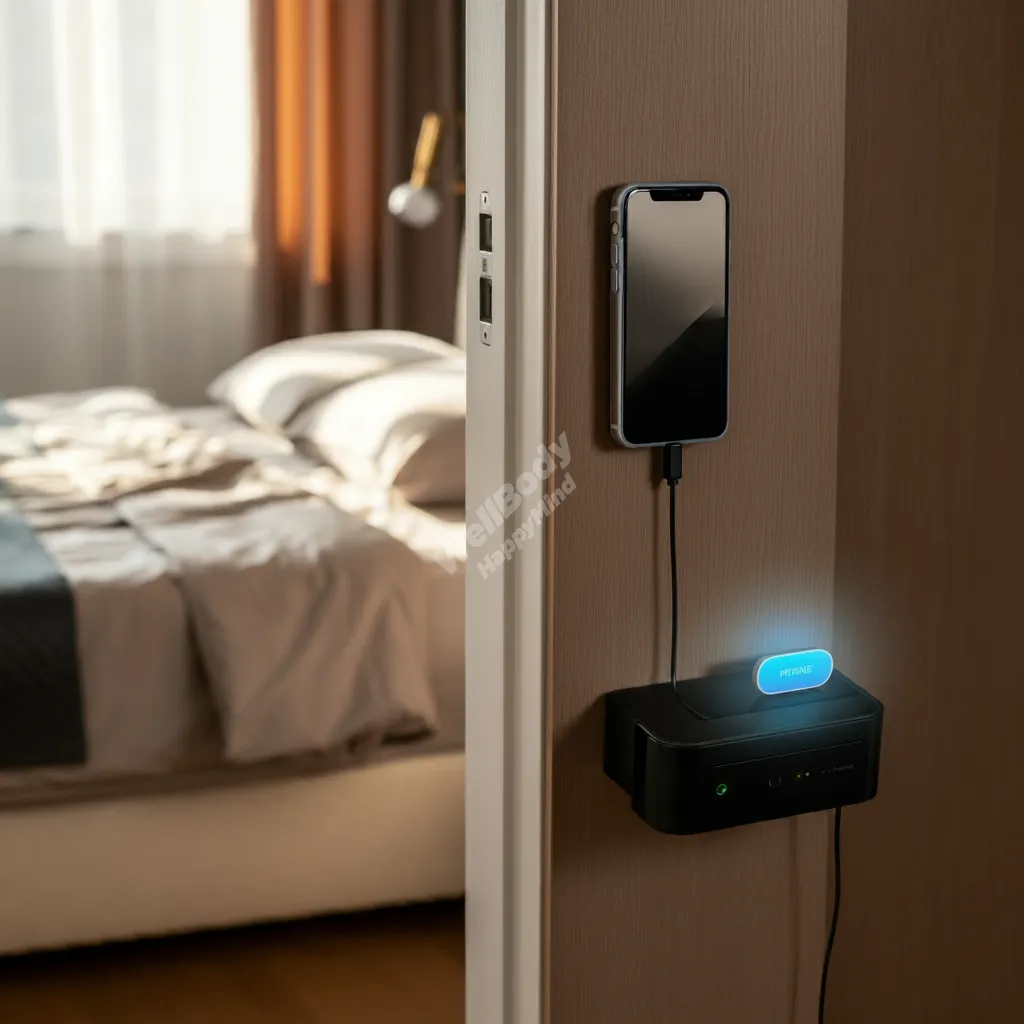6 Proven Steps to Build Mindful Technology Habits

Are you staring at your phone right now? You’re not alone.
The average person spends over 7 hours per day on screens. That’s half our waking life! Our phones buzz constantly with notifications. Social media feeds never stop scrolling. Work emails pop up at all hours.
Technology overwhelm is real. Many of us feel trapped in unhealthy digital habits.
But here’s the good news. You can create a healthier relationship with technology. This guide will show you six practical steps to make it happen. You’ll learn how to use technology mindfully and purposefully.
Understanding Your Current Tech Use
Let’s start by looking at some warning signs of unhealthy tech use:
- You check your phone within 5 minutes of waking up
- Screen time reports shock you each week
- You feel anxious when separated from your device
- Notifications constantly interrupt your focus
- You scroll mindlessly for hours without realizing
- Real-life conversations get disrupted by your phone
- Your sleep suffers from late-night screen time
How to Audit Your Tech Habits
Understanding your current habits is the first step toward change. Here’s a simple checklist to assess your technology use:
Daily Tech Audit Checklist:
- Track your total screen time for one week
- Note which apps consume most of your time
- Count how often you check your phone each day
- Record when you use technology most frequently
- List your common tech-related triggers
- Identify tech habits that make you feel bad
- Notice when technology enhances or hinders your life
Many phones now include built-in tracking tools. Apps like RescueTime or Forest can help too.
Step 1: Setting Clear Technology Boundaries
Creating tech-free zones is essential for mindful technology habits. Here are some spaces to consider:
Suggested Tech-Free Zones:
- Your bedroom (especially during sleep hours)
- The dining table during meals
- Family gathering spaces
- Bathroom (yes, really!)
- Work desk during focus time
- Exercise areas
- Outdoor spaces

Let’s talk about tech-free times. Here’s a sample daily schedule:
| Time | Tech-Free Activity |
|---|---|
| 6-7 AM | Morning routine without phones |
| 8-9 AM | Focused work/study time |
| 12-1 PM | Mindful lunch break |
| 6-7 PM | Family dinner time |
| 9-10 PM | Evening wind-down |
Remember: Start small with these boundaries. Pick one or two to begin. Success builds momentum for bigger changes.
Step 2: Designing Your Digital Environment
Think of your phone like your home. A cluttered space creates a cluttered mind.
Here’s how to organize your apps effectively:
- Move distracting apps to a separate folder
- Delete unused apps right now
- Keep only essential apps on your home screen
- Group similar apps together
- Use folders with clear names
- Hide social media apps from direct view
Take control of your notifications. They shouldn’t control you.
Follow these steps for better notification management:
- Open your phone settings
- Review notifications for each app
- Ask: “Do I need alerts from this app?”
- Turn off all non-essential notifications
- Set specific times for checking others
- Use Do Not Disturb mode more often
Step 3: Practice Intentional Engagement
Before reaching for your device, ask yourself these three key questions:
- Why am I picking up my phone right now?
- Is this the best use of my time?
- How will this action benefit me?

Try these mindful scrolling techniques:
- Set a timer before opening social media
- Take three deep breaths between apps
- Notice your posture while using devices
- Ask “What am I seeking here?”
- Stop scrolling every five minutes
- Look away frequently to rest your eyes
Step 4: Implementing Digital Breaks
Your brain needs regular breaks from technology. Start small.
Quick Micro-Break Ideas (5-10 minutes):
- Stand up and stretch
- Look out a window
- Walk around your space
- Get a glass of water
- Do quick breathing exercises
- Tidy your immediate area
Try a Digital Sabbatical:
Start with a 2-hour tech break. Then gradually increase the duration.
Tips for Successful Digital Breaks:
- Tell others you’ll be offline
- Keep a notebook handy
- Plan offline activities in advance
- Notice how you feel without devices
- Celebrate small wins
- Find an accountability partner
Step 5: Finding Joy in Offline Activities
Technology isn’t the only way to connect and have fun.
Compare these options:
| Online Activities | Offline Alternatives |
|---|---|
| Social media scrolling | Coffee with friends |
| Video game sessions | Board game nights |
| Netflix binging | Reading or puzzles |
| Digital messaging | Writing letters |
| Online shopping | Local market visits |
| Virtual workouts | Park exercises |

Try these screen-free entertainment ideas:
- Start a hobby that uses your hands
- Join a local sports team
- Take up gardening or cooking
- Learn a musical instrument
- Practice art or crafting
- Explore your neighborhood
- Start a book club
Step 6: Monitor Your Progress
Track your journey toward mindful technology use. Keep it simple.
Weekly Check-In Template:
Track These Numbers:
- Daily screen time average
- Number of pick-ups
- Longest tech-free period
- Social media time
- Productive app time
Rate Your Success (1-5):
- Morning routine without phone
- Meal times without devices
- Quality of sleep
- Focus during work
- Real-life connections
- Overall mood
Common Challenges and Solutions:
Work Requires Constant Connection
- Set specific check-in times
- Use website blockers during focus periods
- Create email boundaries
- Take regular screen breaks
FOMO Kicks In
- Remember: most posts show highlights only
- Schedule catch-up times with friends
- Focus on creating real experiences
- Notice how you feel offline
Boredom Strikes
- Keep a list of offline activities ready
- Embrace the quiet moments
- Discover new hobbies
- Practice mindfulness
Maintaining Long-Term Success
Building mindful technology habits takes time. Be patient with yourself.

Expert Tip: “Small, consistent changes create lasting transformation. Start with one habit at a time.” – Dr. Sarah Miller, Digital Wellness Expert
Keys to Lasting Change:
- Celebrate small wins every day
- Focus on progress, not perfection
- Build supportive routines gradually
- Share your goals with others
- Notice how better habits make you feel
- Adjust your approach when needed
Signs You’re Making Progress:
✓ You feel less anxious without your phone
✓ Your sleep has improved
✓ Real conversations hold your attention better
✓ You enjoy offline activities more
✓ Your neck and eyes feel better
✓ Your productivity has increased
✓ You feel more present in daily life
Quick Tips for Ongoing Success:
Keep these reminders handy:
- Your worth isn’t tied to online engagement
- Most notifications can wait
- Real connections matter most
- Nature recharges your mind
- Boredom can spark creativity
- Your attention is valuable
Your Mindful Tech Journey Starts Now
Technology should work for you, not against you.
Every small step matters. Start with just one change today.
Maybe it’s charging your phone outside your bedroom. Or having one phone-free meal.
Your future self will thank you for starting now.
Ready to Begin? Take These Actions Today:
- Pick your first tech-free zone
- Set a specific time for digital breaks
- Choose one offline activity to try
- Download a screen time tracking app
- Share your goal with someone you trust
Remember: Building mindful technology habits isn’t about restriction. It’s about freedom.
Freedom to choose. Freedom to connect. Freedom to live fully.
Let’s start your journey today.



